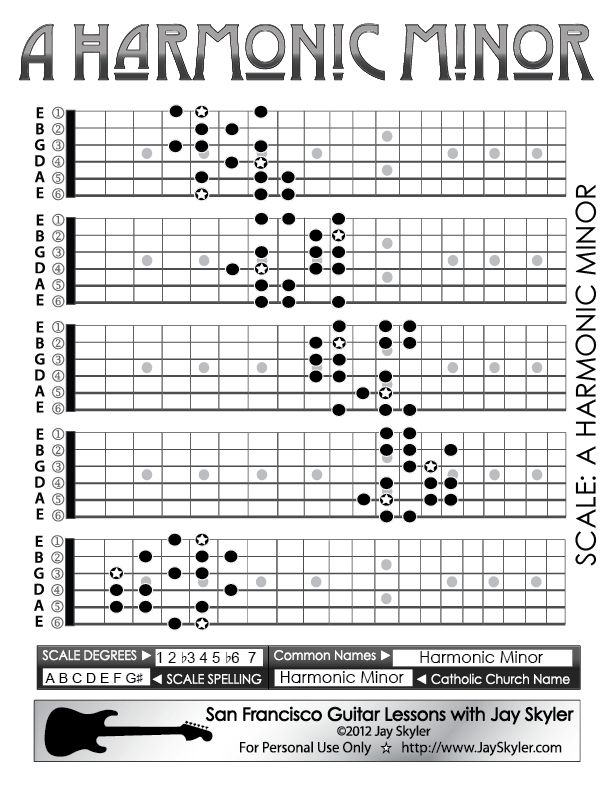

Also, remember that we’re adding the raised sixth in addition to the raised seventh from the harmonic minor scale! Just like with the harmonic minor scale, make sure that you raise that sixth note both times that it occurs in the scale. In the case of an A-melodic minor scale, the new note we’re adding is an F#. We add it by finding the sixth note we play in the scale, and raising it up by one fret. The melodic minor scale is just like the harmonic minor scale that we just played, except with another new note in addition to the raised seventh. With all that mind, here are a few licks based off the harmonic minor scape above to help you get started: That note is what makes the scale distinctive, and using it heavily will help you get the most out of your choice to go harmonic minor. The raised seventh is the heart of the harmonic minor scale. Because the two scales are so similar, the main thing to watch out for is that you don’t lapse into muscle memory and forget the raise the seventh.īut even with all that being said, when soloing with the harmonic minor scale it’s often best to lean into that raised seventh. Soloing with a harmonic minor scale is not drastically different than soloing with a natural minor scale, as only one note is different and many of the minor licks you know and love will still work. This distinctive sound has made the harmonic minor scale a staple of both Latin and Middle-Eastern music, as well as a favorite of many hard rock and metal players, including Randy Rhodes, Joe Satriani, and Ritchie Blackmore. If that 9th fret on the 2nd string feels like an awkward stretch, you can instead play that note on the 4th fret of the 1st string, but neither choice is inherently better than the other.Īs you can probably tell from hearing it played, note one note has a big impact on the overall sound of the scale, making the harmonic minor scale sound pretty distinct from a plain-old minor scale. Try playing that harmonic scale up-and-down a few times, paying special attention to the two notes that we’ve changed. So with all that information in mind, an A-harmonic minor scale will look like this: Since the shape we are using for our minor scale spans a little over two octaves, that means that we are repeating every pitch in the scale at least once, so make sure that both of the seventh degrees that happen are raised by one fret. In the case of an A-harmonic minor scale, the new note we’re adding is a G#. The harmonic minor scale is just like the natural minor scale we just played, except that the seventh degree of the scale (meaning the seventh note we played) is raised by one fret. Please note that this a minor scale proper (called a natural minor scale), and is not to be confused with a minor pentatonic scale, which contains some, but not all, of the above notes. That scale is going to the foundation of what we’re learning in this lesson, so do whatever you need to make sure that it is fresh in your mind and ready on your fingers. Try warming up by running that scale a few times, and maybe even jamming on it a little bit. On an A-minor, that scale shape that we are going to use will look like this: There are many different yet equally correct ways of playing a minor scale, but today we are going to use a pretty typical, movable box-shape approach to the minor scale. In this piece, we are going to learn the harmonic minor scale, the melodic minor scale, contrast them to the regular minor scale and learn some cool licks using both new scales.įirst, let’s make sure that we’re on the same page about we’re playing an ordinary old minor scale. Both scales are similar to the minor scale that you likely already know, but with some essential notes changed, making for a formula that will force you just far enough outside your comfort zone to spark some new creativity. If you feel like you’re starting to fall into a rut with your soloing, exploring the harmonic and melodic minor scales can be a great way to pull you out of it.


 0 kommentar(er)
0 kommentar(er)
